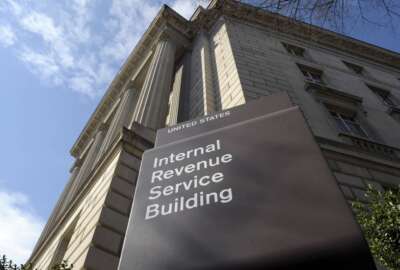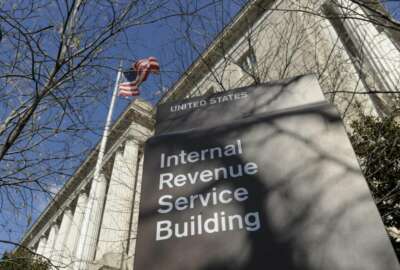IRS plans to hire staff to tackle backlog faster, but struggles on competitive pay
The IRS expects new hiring authority will allow it to bring new employees onboard within 40 to 45 days, rather than several months, to deal with a major backlog...
The IRS expects new hiring authority will allow it to bring new employees onboard within 40 to 45 days, rather than several months, to deal with a major backlog of tax returns and correspondence.
The agency received direct hire authority from Congress in the fiscal 2022 spending bill that President Joe Biden signed into law this week.
That spending bill also gave the IRS its highest budget in decades.
IRS Commissioner Chuck Rettig said this hiring flexibility, combined with the agency receiving a lighter paper-based workload this filing season, puts the agency on track to resolve its major tax return and correspondence backlog by the end of December.
“For more than two years, we’ve been requesting direct hiring authority because we compete with the private sector, who can bring somebody on board the next week. And for us, it’s been a six-to-eight month process,” Rettig told the oversight subcommittee of the House Ways and Means Committee on Thursday.
The agency, however, is still stuck paying many of its front-line employees who open mail and process incoming tax returns $15 an hour.
While the private sector is almost always able to offer higher pay than the federal government, an especially competitive labor market at this stage in the COVID-19 pandemic has made it even harder for the IRS to attract in-demand workers.
Rettig said the agency competes with retail giants like Amazon, Walmart and Target for the same labor pool.
While some of these retailers are offering up to $20 an hour, Rettig said the IRS was, until recently, paying its lowest-paid staff as much as $14.57 an hour.
That pay, however, increased to $15 an hour, after President Joe Biden signed an executive order to guarantee that the entire federal workforce, including federal contractors, received $15 an hour.
“The difference between $15 and $20 is whether or not they’re going to have a lunch or a dinner, and what it’s going to be. So we need assistance,” Rettig said.
Rettig said the agency is trying to incentivize prospective employees through tuition reimbursement programs and child care credits. Rettig said he also holds regular talks with the National Treasury Employee Union to address workforce challenges.
“I want our employees to be here today, during ’22. I want them to be here during ’23 as well,” Rettig said. “The employees are the strength of the agency.”
Rettig said direct hiring authority will allow the IRS to bring people on board in 40 to 45 days, rather than six to eight months. He said the IRS recently spent eight months looking to hire about 5,000 employees in submission processing.
While Rettig told the committee that the IRS is “trending in a really good direction,” the agency faces a long journey overcoming long-term workforce and budget challenges.
A Government Accountability Office report in February found the IRS failed to meet its hiring surge goals in fiscal 2021 for returns processing staff. The IRS told GAO that these employees had an attrition rate of 17% last year, more than double the average for the total IRS workforce.
GAO determined that for every 10 newly hired returns processing staff, four are needed just to offset the rate of attrition.
Rettig said the IRS has an 800-member “surge team” detailed to work on accounts management operations, while another 700-employee team is working on submission processing.
Barring any unforeseen circumstances, Rettig said the IRS will eliminate the backlog and return to a normal inventory of cases by the end of the calendar year.
Meanwhile, taxpayers are sending less paper for the IRS to process.
Rettig said this year, the IRS is on track to receive about 97% of all tax returns electronically.
The IRS received more than 17 million paper returns in fiscal 2021. That’s only a small fraction of the number of overall returns the agency received, but still created problems for the agency to process so much paper.
“The issue has always been, for the Internal Revenue Service, paper – pre-pandemic and during the pandemic,” Rettig said.
National Taxpayer Advocate Erin Collins told the Senate Finance Committee last month that about 90% of all tax returns last year were filed electronically.
The agency has repeatedly urged taxpayers to file online to receive their refunds as quickly as possible, and without any delays.
Rettig said it is critical taxpayers file accurate returns that account for COVID-19 stimulus programs, including the monthly Advanced Child Credit payments and Economic Impact Payments (EIPs).
Rettig’s term expires in November, making this his last filing season as IRS commissioner.
While Congress approved a $12.6 billion IRS budget for the rest of the fiscal year, the agency is seeking more funding to realize the full scope of its ongoing, six-year IT modernization plan.
Subcommittee Ranking Member Tom Rice (R-S.C.), however, said the IRS still faces an uphill battle earning trust from Republican lawmakers and making the most of the money it’s already received.
“I think the hurdle the IRS has to jump is convincing us, and maybe it’s mostly or maybe even all Republicans, I don’t know, that if we throw money at the problem, that it will be able to increase efficiency, and that the IRS can actually pull it off,” Rice said.
Rettig, meanwhile, dismissed a midterm election GOP agenda from Sen. Rick Scott (R-Fla.) that calls for “immediately” cutting IRS funding and its workforce in half.
“If the IRS budget was cut by 50%, you might be better off and save money by just shutting it down. We account for 96% of the gross revenue of the United States of America. How are you going to fund what we need to fund and what every American deserves? Efficiency, yes, but cutting our budget is not the right answer,” he said.
Rettig has frequently told Congress that the IRS is too “outgunned” to go after tax cheats, and that the tax gap between what the taxpayers owe and what the IRS is able to collect may be as high as $1 trillion annually.
However, Rettig has repeatedly rejected claims that the IRS disproportionately audits low-income individuals and households at a higher rate, or doesn’t do enough to audit high-income individuals and businesses.
“We audit high-income taxpayers more than any other category in the Internal Revenue Service taxpayers,” Rettig said.
Copyright © 2024 Federal News Network. All rights reserved. This website is not intended for users located within the European Economic Area.
Jory Heckman is a reporter at Federal News Network covering U.S. Postal Service, IRS, big data and technology issues.
Follow @jheckmanWFED






